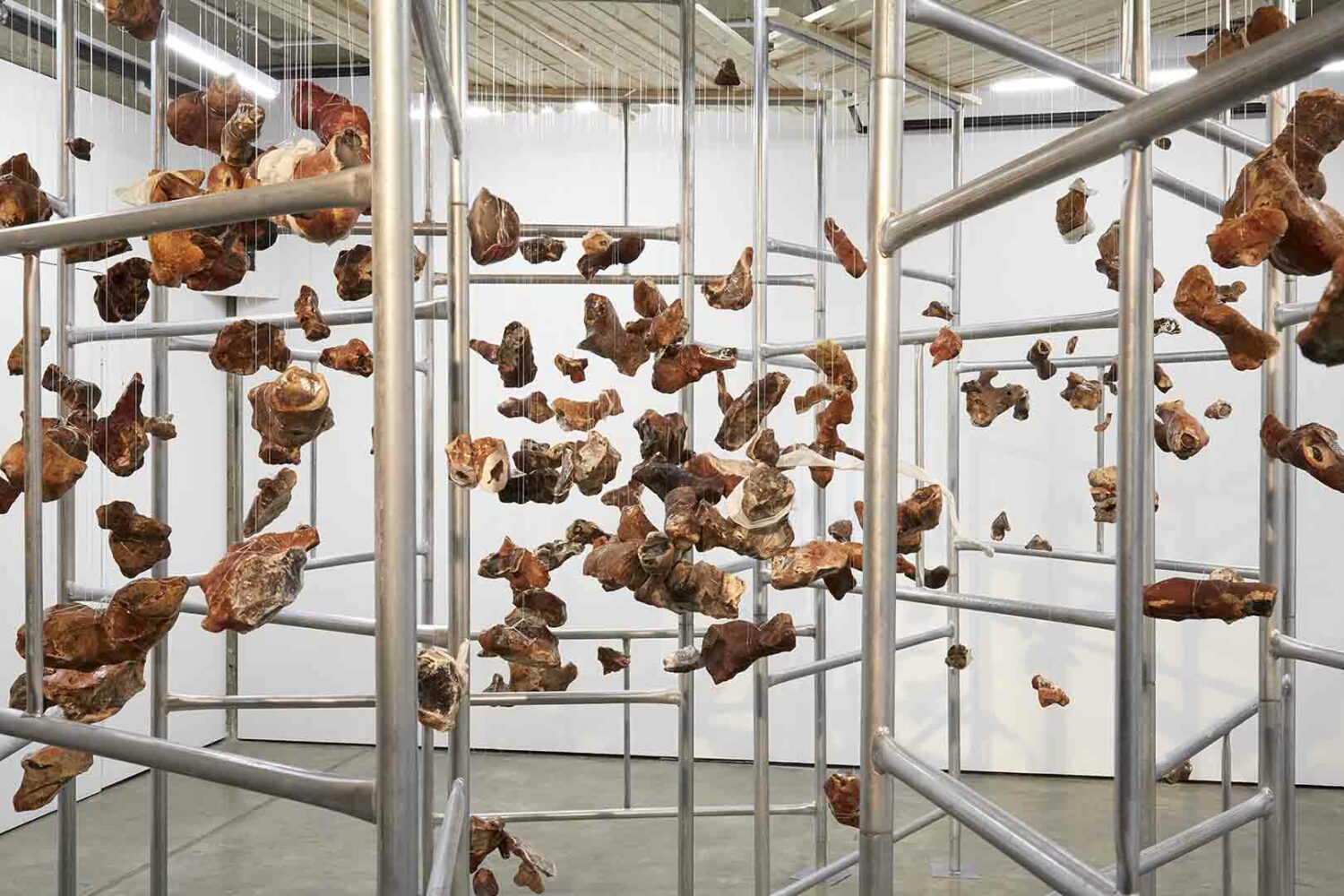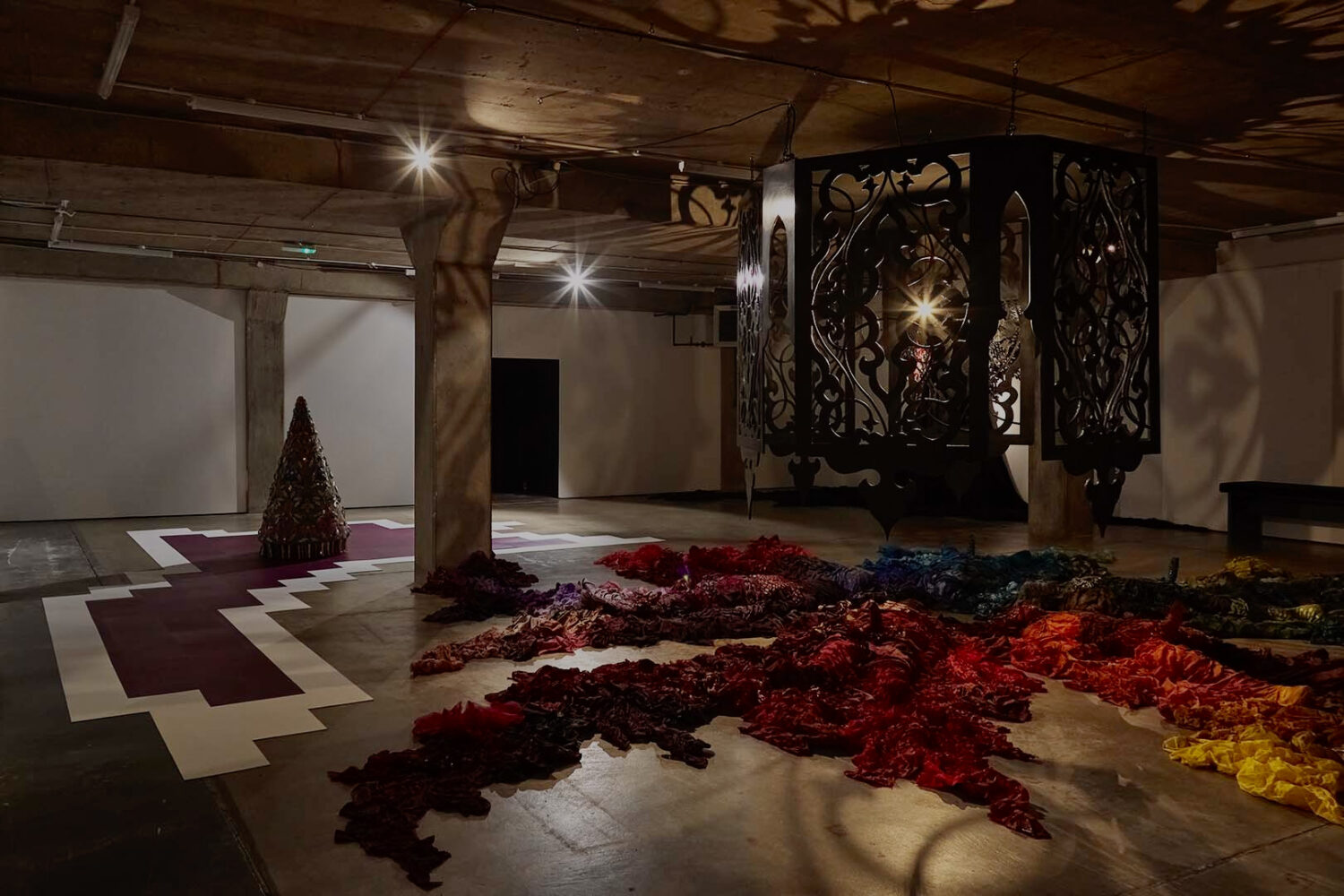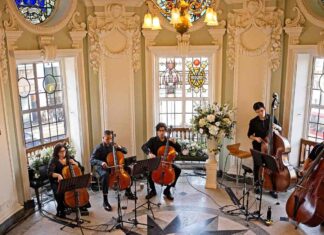 Diaspora Pavilion 2: London at Block 336 features the sculpture and installations of Sonia E Barrett and Kashif Nadim Chaudry. The work of these artists speaks to their fascination with certain materials; their experiences as members of a diaspora (people spread or dispersed from their original homeland), and their desire to connect with broader cultural and historical themes
Diaspora Pavilion 2: London at Block 336 features the sculpture and installations of Sonia E Barrett and Kashif Nadim Chaudry. The work of these artists speaks to their fascination with certain materials; their experiences as members of a diaspora (people spread or dispersed from their original homeland), and their desire to connect with broader cultural and historical themes
The first piece on show is Barrett’s Here Tell, Quantum Black, which explores and illuminates the nature and history of flint. Flint has played a significant role over thousands of years of human history as tools, weapons and building materials. Barrett gathered hundreds of white and black flint fragments, hand painted them in rich earth colours and created a suspended constellation, a small universe of flint. Each piece has been beautifully rendered and sits within clusters of varying density in a timeless space. But Barrett is interested in flint not just as a material, but also its part in human history and particularly its associations with violence – as weaponry, or the damaging effect on the lungs of miners. Each piece has a past and they collectively act as a window and commentary on history.
In the adjoining gallery Barrett has made We The Extracted, a film which draws together the elements of this history. Archival footage and testimony document the destructive impact upon workers and the victims of the British empire.
 From a fascination with flint to a fascination with fabric. Kashif Nadim Chaudry’s installation, entitled Char Bagh, refers to the Indo-Persian garden design based on the four gardens of heaven mentioned in the Quran. The darkened gallery is host to a gorgeous array of richly coloured fabric, metal structures and mobile sculpture. A sparkling wonderland, full of decoration and adornment may be on the surface, but much more lies beneath.
From a fascination with flint to a fascination with fabric. Kashif Nadim Chaudry’s installation, entitled Char Bagh, refers to the Indo-Persian garden design based on the four gardens of heaven mentioned in the Quran. The darkened gallery is host to a gorgeous array of richly coloured fabric, metal structures and mobile sculpture. A sparkling wonderland, full of decoration and adornment may be on the surface, but much more lies beneath.
In the centre of the gallery sits Hareem, which at first looks like a gently rolling landscape fashioned from textiles. On closer inspection there appear to be some unexpected protuberances. It’s only then that the landscape evolves and comes into focus as a series of prone male figures with prominent erections. It is witty, irreverent, and still pleasing, but has a more serious point about unrequited desire and dislocation.
 Cabal is a rotating cone shape covered in gorgeous decoration which moves slowly around the floor. The skirt-like cone sits atop a host of human legs which occasionally produce a high kick. Like his other work, it is rather gentle and calming but is also suggestive of much going on below the surface – hidden celebrations perhaps or even something darker.
Cabal is a rotating cone shape covered in gorgeous decoration which moves slowly around the floor. The skirt-like cone sits atop a host of human legs which occasionally produce a high kick. Like his other work, it is rather gentle and calming but is also suggestive of much going on below the surface – hidden celebrations perhaps or even something darker.
Swags & Tails similarly draws you in by its sheer decorative shape and texture. But the myriad of bird skulls built into the piece suggest a more sinister side to beauty.
Diaspora Pavilion 2: London is an immensely enjoyable exhibition. It’s on a grand scale with bold, large pieces from both artists exuding a surface beauty below which more complex and often troubling narratives unfold.
The exhibition is free and runs until 10 June in Block 336, 336 Brixton Road, SW9 7AA
Open Thursday – Sunday 12 – 5pm
For further information call 020 7207 5327or visit www.block336.com

















